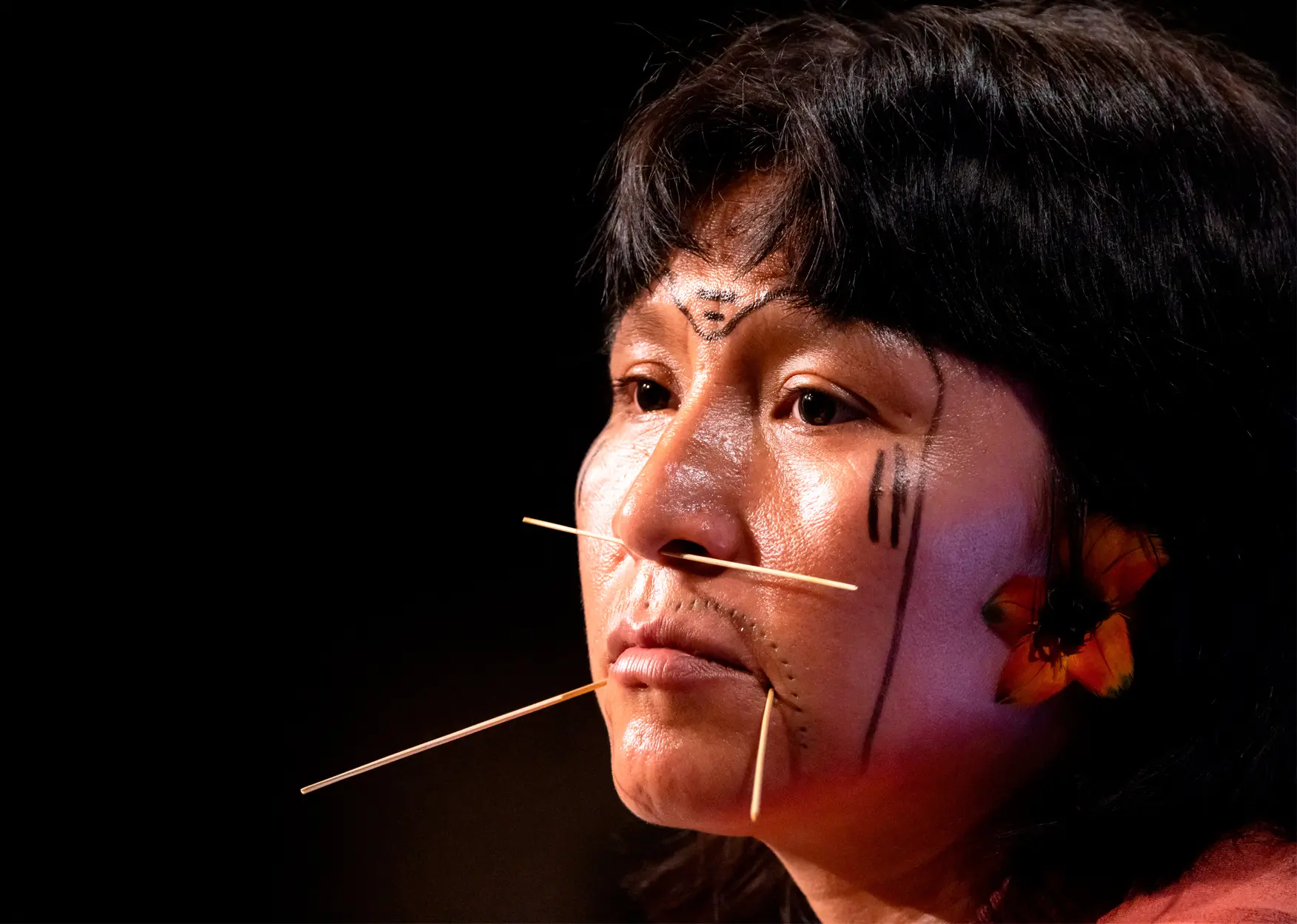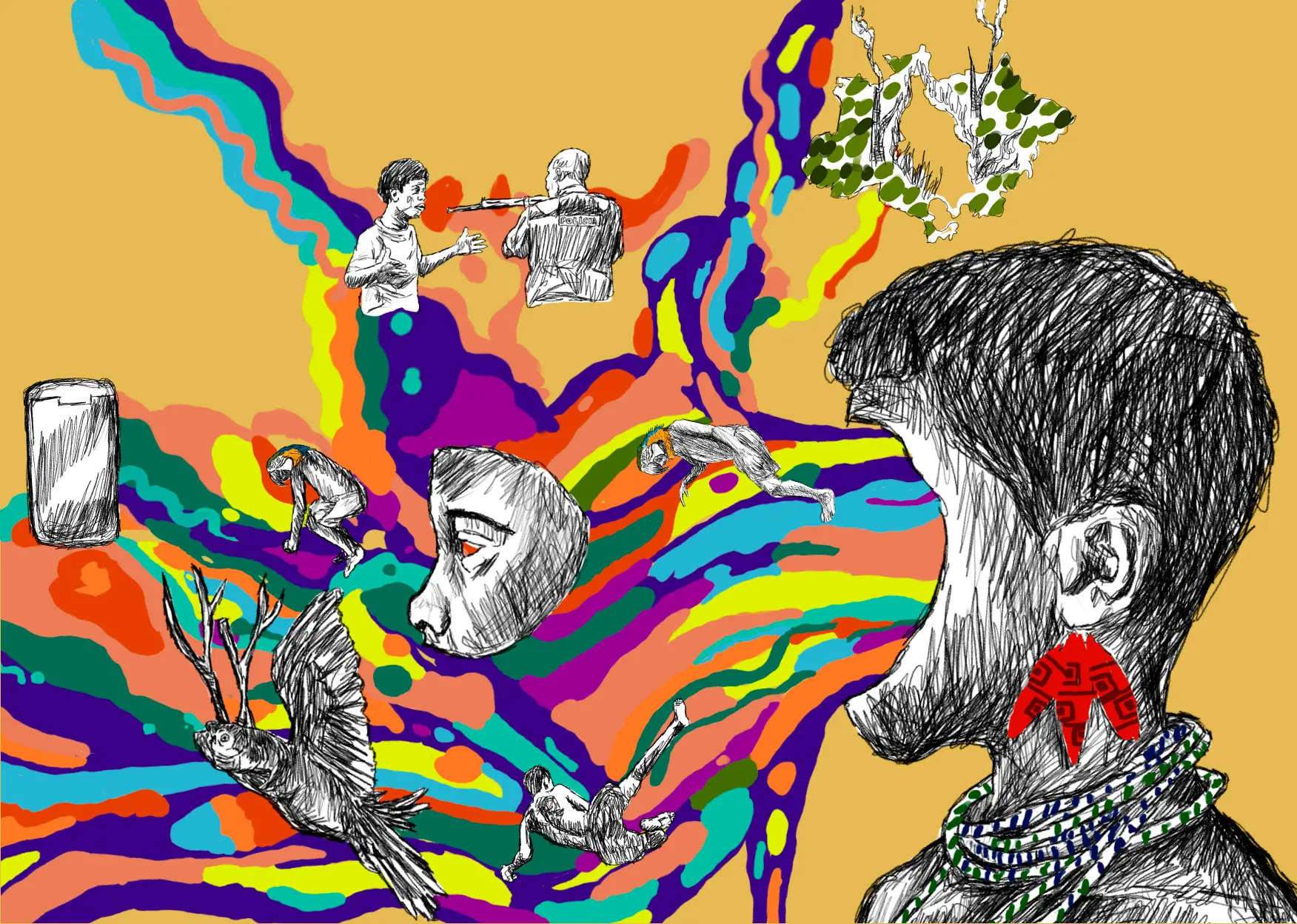People born in the United States are used to referring to themselves as “Americans,” implying, if not dictating, that they are the sole legitimate occupants of America. It might seem more precise to use something like the Portuguese alternative estadunidense, or “United-Statesian,” but this term creates ambiguity, given that other countries, like Brazil, are also nationally constituted as unions of states. What’s more, “United-Statesian” omits the name of the continent, taking away the toponym that distinguishes this people of the north. At the same time, calling them “North Americans,” as some in Brazil insist on doing, loses sight of the fact that their nearest neighbors, Canada and Mexico, are likewise part of the northern portion of the continent. The problem is complicated by the fact that Mexico is culturally much closer to its Latin American neighbors to the south than to the Anglophone and Francophone countries to the north.
But, after all, what does it mean to be Latin American? Do these twenty-some countries share fundamentals, or are they just an amorphous aggregate of disparate societies? What marks are left of the immense Indigenous population, estimated at 47 million people, who inhabited our continent before the European invasion? What memory do we hold of the devastating forced migration that brought more than 10 million Africans to work and die here?
Let us compare Brazil and Mexico, the two largest countries in the region.
Brazil, the only Portuguese-speaking country in the Americas, continues to be defined by its extractivist colonial history. The very name of the Brazilian people is a direct reference to the arduous manual labor needed to chop down and export the hard trunks of the brazilwood tree, which was an object of the commodity disease as early as 1511.
In the 16th and 17th centuries, the coastal region of Brazil became the top sugar producer on the planet through the enslavement of Indigenous and African people, who did the brutal work of planting and harvesting the monoculture crop of sugarcane, so sweet to savor and so bitter to swallow. Gold, emeralds, and diamonds came next as a justification for enormous suffering and death, affording Europe its primitive accumulation of capital, which to this day sustains its unbridled material wealth. Harvesters of brazilwood were replaced by workers in sugarcane fields and by gold miners, while life in this part of the world grew increasingly wretched.
Countless Indigenous peoples—the original occupants of the territory and creators of forest trails—moved far away from the white male murderers and rapists who invaded every piece of land they could and then returned to their coastal villages, sporting necklaces of severed ears. Similarly, enslaved Africans vigorously rejected their relentless oppression, fleeing to areas where the Indigenous lived and founding thousands of quilombo settlements that endure today. These people are examples of resistance to death and living memory of another way of coexisting and dancing the cosmic dance, with indestructible faith in the power of time, which the white fig – a symbol of time and ancestry in Candomblé – embraces and teaches.
In 1822, when Brazil declared its independence from Portugal and the Brazilian Empire was created, the national flag incorporated branches of coffee and tobacco, major export products in the 19th century, reinforcing the idea that extracting natural wealth was the country’s vocation. Transformed into coffee and tobacco growers, the Brazilian people remained hostage to the production on a colossal scale of the commodities then demanded by the development of global capitalism. Next came cacao and rubber. The products changed, but the project of unequal, oppressive enrichment persisted.
Despite the country’s supposed independence, and at the personal decision of the emperor, the new flag retained the green background that alluded to the House of Bragança, the lineage of the King of Portugal and his beloved son, Dom Pedro I. The yellow diamond shape was also maintained, representing Austria’s House of Habsburg, the family of Empress Maria Leopoldina. This veritable Flag of Dependence would fly throughout the Empire, until a military coup finally overthrew and exiled the Bragança dynasty in 1889. Even so, the new power holders opted to keep the colors and shapes on the flag, in a clear demonstration of ideological continuity, regardless of their apparent break with the past.
The contrast with Mexico couldn’t be starker. It is the largest Spanish-speaking country in America, with a mostly mixed-ethnicity population, much more Indigenous than white or Black. Since its independence in 1821, the country’s name and flag have borne the indelible marks of the people known as Mexica or Aztec, the predominant Indigenous ethnic group in the central valley of Mexico when the Spanish invaders arrived. Today, the Aztec identity can be felt everywhere in Mexico, from its national soccer team to a main bank in the financial system. The Mexica people founded the capital, Tenochtitlán—later to evolve into Mexico City—in the place where they saw an eagle perched on a cactus, gripping a fearsome rattlesnake in its talons. This was precisely the symbol chosen for the flag. It’s as if Brazil were called Tupi and its flag portrayed graphics typical of this culture.
Today, in the 21st century, Brazil is still a world leader in sugar, coffee, cacao, soy, ethanol, and orange production, just as it is still a world leader in hunger, illiteracy, and the systematic annihilation of non-whites. According to Brazil’s Institute for Applied Economic Research, the country’s homeless population has exploded over the last decade, increasing almost tenfold: in 2023, 227,087 people were living on the streets, compared to 21,934 in 2013. When an estimate of unregistered people is included, the institute calculates that Brazil’s homeless population is roughly 281,000 people.
On a daily basis, the police murder young Black men in the country’s favelas, while in rural areas, big ranchers and farmers, acting in collusion with militias and the police, forge ahead with their massacre of Indigenous leaders. This is what happened on January 21, 2024, in Caramuru-Catarina Paraguassu Indigenous Territory, in southern Bahia, when a rancher’s son fatally shot Maria de Fátima Muniz, or Nega Pataxó, a spiritual leader and professor of the Pataxó Hãhãhãe. Her brother, the cacique, or chief, Nailton Muniz Pataxó, took a bullet to the kidneys and had to undergo surgery, while another Indigenous woman had her arm broken during an action by around 200 ranchers. Exactly one month earlier, on December 21, 2023, the 31-year-old cacique Lucas Pataxó was murdered, and the police have yet to identify his attackers.
A similar fate was met by Mãe Bernadete, a priestess of the Afro-Brazilian religion Canbomblé and a quilombo leader who died after being shot 25 times on August 17, 2023, in the metropolitan region of Salvador, six years after the nearly identical death of her son, Flávio Gabriel. This is the lot of the Pataxó, Yanomami, Guarani Kaiowá, and many other Indigenous peoples. This is the lot of those who live in favelas and quilombos across Brazil. Even when the crimes are committed in broad daylight, the murderers almost always remain unidentified and free to go on killing.
All this violence reflects the spirit of the outrageous law passed by Congress in December 2023, restricting the definition of Indigenous territories to those occupied by Indigenous people in 1988, when Brazil’s newest Constitution was ratified. The real social project underway for more than half a millennium is the complete extermination of the 267 Indigenous ethnic groups inside Brazilian territory. The same holds true for the nearly 6,000 remaining quilombo communities, as evidenced by the brutal dispute between the Brazilian Air Force and the quilombo of Alcântara, in the state of Maranhão.
Brazil has never recognized itself as Indigenous or African, even though 55.5% of its population declares itself Black or brown. The society that sucked the blood from so many generations of enslaved people is now doing the same to their descendants, all to enrich a handful of people, almost every one of them white and many of them foreigners who have never set foot here.
Meanwhile, prosperity theology is advancing ferociously in its process of capitalist evangelization, so effective at mentally subjugating the poorest people, uprooted from their ancestry and in thrall to the commodity disease and the worship of the Money God. Supported by absurd tax exemptions, these churches are parasites of the people and the State, resisting pressure from the Finance Ministry to simply pay their taxes.
Where nothing is expected, nothing is produced. The ranks of deputies and senators in Congress who are responsible for these distortions are composed almost entirely of large landowners, businessmen, pastors, and big bosses—rich, powerful white men, cynical and unscrupulous, the direct or indirect heirs of the colonizers who have always extracted as much as they could and always come out on top.
In this scorched earth setting, much better than holding periodic elections to choose parliamentarians would be to draw names out of a hat, but in tune with Brazil’s sociodemographic profile. At least we would have a statistically legitimate representation of Blacks, browns, women, Indigenous, Quilombolas, LGBTQIA+ and other currently excluded minorities.
Given the social abyss Brazil insists on digging ever deeper, it is inspiring to look to Mexico, where the State has been secular since 1857, agrarian reform took place nearly a century ago, and people are quick to cite their Constitutional rights. If one day we decide to close the open veins of Latin America and free ourselves from exploitation by all kinds of gringos, we will do so by affirming our Afro-Indigenous roots, which always make life more verdant, like a sumaúma in the forest, a fig tree in the savannah, a cactus in the desert.
Sidarta Ribeiro is a father, capoeira practitioner, and biologist. He holds a PhD in Animal Behavior from Rockefeller University and a Post-Doc in Neurophysiology from Duke University. A researcher with the Strategic Studies Center at the Oswaldo Cruz Foudation (Fiocruz), and a cofounder and educator at the Brain Institute at the Universidade Federal do Rio Grande do Norte, he has authored five books, including O Oráculo da Noite and Sonho Manifesto (Cia das Letras). For SUMAÚMA, he writes the monthly column Thought Seeding.
Fact-checker: Plínio Lopes
Proofreader (Portuguese): Valquíria Della Pozza
Spanish translation: Julieta Sueldo Boedo
English translation: Diane Whitty
Layout and finishing: Érica Saboya
Editors: Viviane Zandonadi (editorial workflow and copy editing), and Talita Bedinelli (coordination)
Director: Eliane Brum





